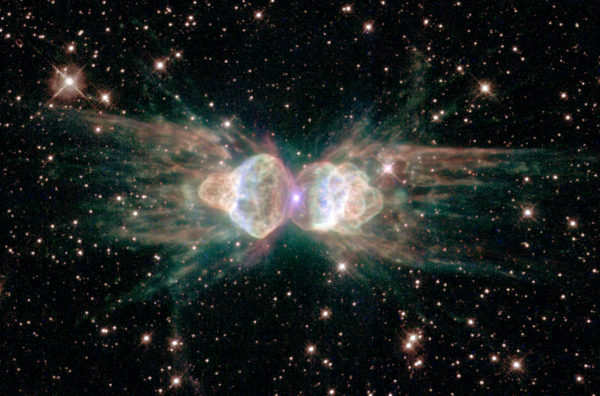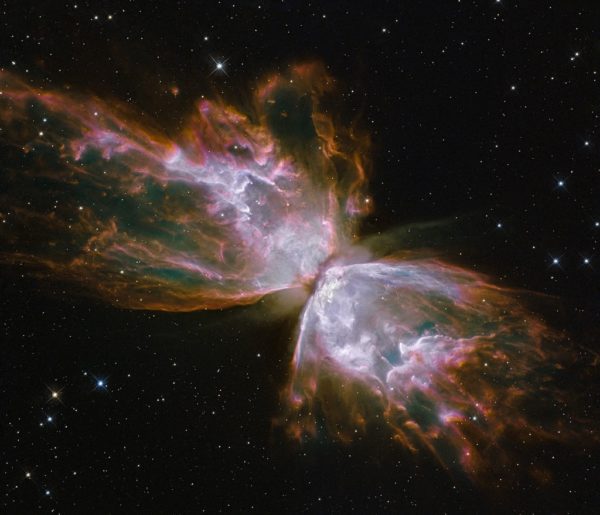"The self-same atoms which, chaotically dispersed, made the nebula, now, jammed and temporarily caught in peculiar positions, form our brains; and the 'evolution' of brains, if understood, would be simply the account of how the atoms came to be so caught and jammed." -William James
When stars like our Sun run out of fuel, they expand into red giants, start fusing helium in their cores, blow off their outermost layers very slowly, and then their insides die. They heat up even further, contract down to white dwarfs, and the intense ultraviolet light ionizes and illuminates the blown-off material.
 The Ant Nebula, also known as Menzel 3. Image credit: NASA, ESA & the Hubble Heritage Team (STScI/AURA); Acknowledgment: R. Sahai (Jet Propulsion Lab), B. Balick (University of Washington).
The Ant Nebula, also known as Menzel 3. Image credit: NASA, ESA & the Hubble Heritage Team (STScI/AURA); Acknowledgment: R. Sahai (Jet Propulsion Lab), B. Balick (University of Washington).
But that material isn’t spherical, but rather lights up primarily as two bipolar jets! Even for stars that rotate slowly, the law of conservation of angular momentum still applies, meaning that even if it takes days, months or years for these giant stars to rotate, almost all of them still have a preferred axis. It also means our Sun very likely will, as well.
- Log in to post comments

